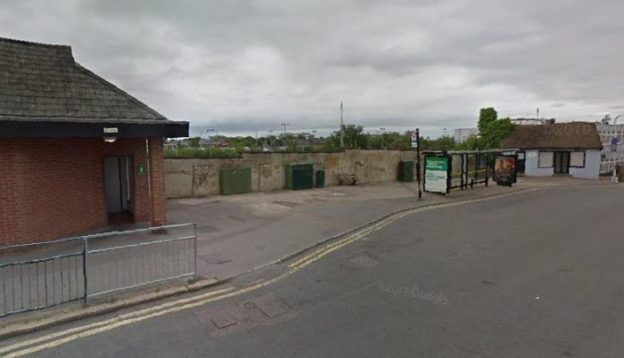A very short article in “The Colonel”, the quarterly journal of the Colonel Stephens Society reminded me of something that I have known for a time but about which I had not really made the connection with my family history. The short article by Tom Burnham was really little more than a note to go with scanned images from the Sevenoaks Chronicle and Kentish Advertiser of Friday 6th April 1928. [1] The Sevenoaks Chronicle and Kentish Advertiser – Friday 6th April 1928 – source British Newspaper Archive. [2]
The Sevenoaks Chronicle and Kentish Advertiser – Friday 6th April 1928 – source British Newspaper Archive. [2]

My grandparent’s house in 2020, very little different from what I remember it back in 1970, (Google Streetview).
My maternal grandparents, Arthur and Ivy Norton, had their first and last homes in Tonbridge, and only a short distance from Salford Terrace. I remember visiting my maternal grandmother as a child and on one occasions staying with her when my father changed his employment from Hull, East Yorkshire to Chelmsford, Essex and we had to give up our house in Hull 6 weeks or so before our new house in Braintree, Essex was completed and ready for us to live in. For one summer, Mum and the 4 of us who were children lived on 22, Meadow Road in Tonbridge.
The area immediately South of Tonbridge Railway Station was developed in the late 19th Century. With housing to the East of the A21/A26 and Waterloo Road following in the first quarter of the 20th Century. The first OS Map below shows the area at the end of the 19th Century (the mapping dates from 1895). The second OS Map was published in 1960 with mapping dating from 1958.
Colonel Stephens rented rooms for both his home and his office at Ashby House, 1, Priory Road in Tonbridge, close to Quarry Hill Road. As his business developed, he took out a lease on an office on the opposite side of Quarry Hill Road at 23, Salford Terrace, in 1900. The rooms in Ashby House and the offices in Salford Terrace were his permanent base throughout his life. [5] The premises in Salford Terrace are still in use, they were towards the South end of the Terrace. Ashby House is long-gone.The property where his offices were based in Salford Terrace is one of the few premises that have not been extended towards the street. Little has changed in the outward appearance of Salford Terrace since Colonel Stephens’ day. Little more than the change of shop names and their name panels.
References
- Tom Burnham; The Colonel; published by the Colonel Stephens Society, Volume 140, p18.
- The Sevenoaks Chronicle and Kentish Advertiser – Friday 6th April 1928 – source British Newspaper Archive, accessed on 28th August 2020.
- https://maps.nls.uk/geo/explore/#zoom=17&lat=51.19021&lon=0.26897&layers=168&b=1, accessed on 28th August 2020.
- https://maps.nls.uk/geo/explore/#zoom=17&lat=51.19021&lon=0.26897&layers=170&b=1, accessed on 28th August 2020.
- http://www.tonbridgehistory.org.uk/people/colonel-stephens.htm, accessed on 12th September 2020.







Colonel Stephens’s influence on Tonbridge, Kent is undeniable and his legacy continues to shape the town’s history. As an innovative railway engineer, Colonel Stephens played a significant role in the development of Tonbridge’s railway infrastructure, including the construction of the Tonbridge-Faversham Railway line. His visionary approach and determination helped connect Tonbridge with neighboring towns and facilitated transportation and trade in the region. Today, Tonbridge stands as a testament to Colonel Stephens’s contributions, with remnants of his railway heritage visible in the town’s architecture and transportation system. His legacy is a reminder of the ingenuity and perseverance that has shaped Tonbridge’s growth and development. The town owes a debt of gratitude to Colonel Stephens for his pivotal role in establishing a strong railway network that has greatly benefited the community.
The Colonel Stephens Railway Museum at Tenterden Town station has a display of Col Stephens’ office at Salford Terrace as it was in the 1920s, using many of the original fittings – https://www.flickr.com/photos/21602076@N05/16753227539